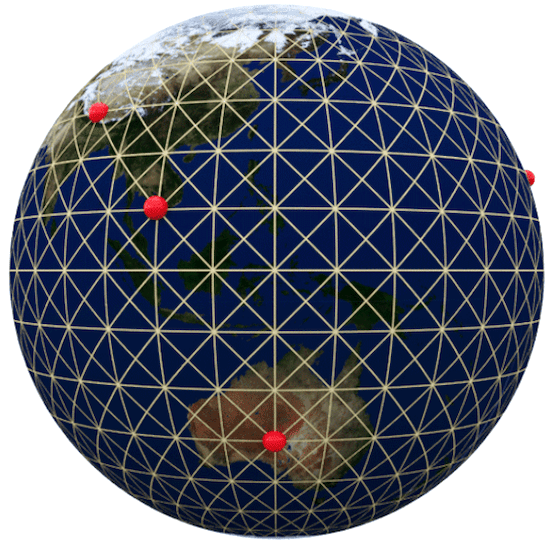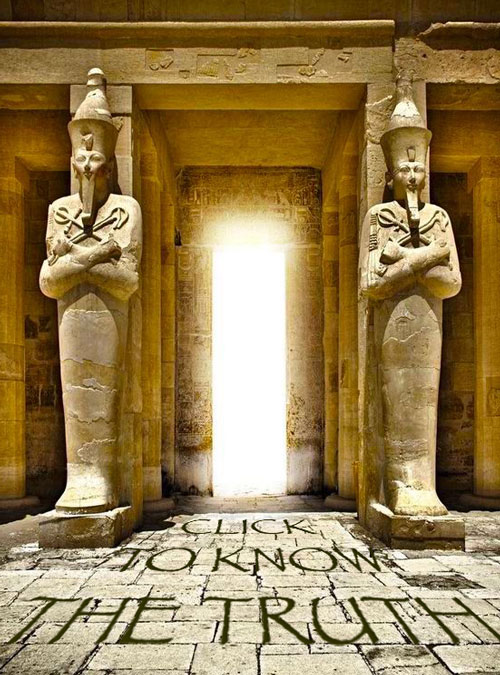The Christ Grid
This is the sacred matrix around planet Earth:

It is partly based on the Isotropic Vector Matrix (IVM) which is a space-filling system based on the cuboctahedron and octahedron, rather than the traditional cube-based XYZ grid. It’s called “isotropic” because all directions are treated equally with no preferred vectors—unlike the Cartesian system which privileges the X, Y and Z axes.
When we lay this grid over planet Earth, we have an even-node distribution. The triangular and hexagonal patterning match the IVM’s close-packed logic. With no privileged axis—every direction is equally supported, which is core to the IVM. It is also reminiscent of Fuller’s geodesic domes, which emerge naturally from projecting IVM-type lattices onto spheres.

At the centre is a cuboctahedron, called the Vector Equilibrium (VE) because all vectors and edges are in perfect balance. Buckminster Fuller proposed it as a more fundamental coordinate system of the universe, because it reflects the way energy and matter organise in nature. In other words, all the edges of the figure are of equal length and this distance is always the same as the length of its vertexes from the centre. It remains an extremely stable shape.

Above: perfect internal symmetry doesn’t reflect perfect external compatibility
But there is another gird on planet Earth which is based on the rhombic dodecahedron. It tessellates perfectly meaning that it fills 3D space without any gaps:

The secret here is that both grids can be joined with something simpler called the face-centred cubic (FCC) lattice. Why? Because this matrix places points at cube corners AND face centres—thus creating the underlying structure that accommodates both the IVM and the rhombic dodecahedron.

When heating iron above 912 °C, its crystal structure changes to FCC. In this form it is called gamma iron (γ-Fe) or austenite. γ-iron can dissolve considerably more carbon. This temperature is found in the upper mantle and in volcanic activity. The FCC lattice of iron hints at the structure of the Christ Grid. When this cubic lattice is converted to a geodesic sphere, it looks like the Earth grid:

This means that the FCC lattice is a facsimile of the fundamental consciousness matrix—it simultaneously expresses perfection (cuboctahedral coordination at each point) and infinity (rhombic dodecahedral tessellation of space). This suggests that enlightenment and transcendence are just reciprocal states based on our respiration.
Sacred sites on the grid include Mt Kailash, Giza, Santiago de Compostela, Sedona, Teotihuacan, Ayers Rock, Machu Picchu, Lake Titicaca, Easter Island and others.

If a soul is sufficiently advanced then enlightenment and transcendence will balance. To experience Ma’at, all we have to do is visit a node on the matrix—the experience is pure, natural and transformative!
